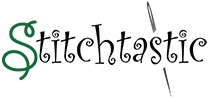What better way is there to compliment the soft furnishings in any room of the house than making cross stitch cushions? The pattern on your cushion can either be extremely busy or, perhaps, a single flower matching the main colour of your curtains. If the cushion is for a child's room, their favourite character from a book would look amazing stitched in their favourite colours. The choice is endless.
If this is your first attempt at cross stitching a cushion, it is suggested that you keep both the design and size of the cushion relatively simple so a small, square shaped cushion is recommended. Once you have completed your cushion, it is always possible to enhance its appearance by adding an edging of lace or a frill, although the beauty of a cross stitched cushion is precisely the cross stitching itself.
Choose the design you would like to cross stitch, remembering to keep it slightly smaller than the size of the completed cushion, enabling you to sew the cushion cover together. It is advisable to ensure at this stage that you have sufficient materials to complete your cushion. You'll not only need sufficient thread and material, but matching sewing cotton and zip too, together with a square cushion pad. A zip will allow you to remove your cover to wash it. If you are not too happy at the thought of inserting a zip, it is possible to neatly hand sew with a slipstitch one edge of the cushion together which will still allow you to remove the cover.
Using a stretch canvas and commencing in the centre of the piece as usual, complete your design. When your stitching is finished, check the item to ensure you have not left any marks. You may prefer to wash it in a mild soap at this stage anyway. Whilst it is damp, press the design on the wrong side as this will assist the pattern to stand out on the right side and during pressing pull the work into a true square.
Measure your cushion pad and adding a seam allowance of approximately 12 mm (half an inch for those of us still using "old money") cut two squares from your chosen fabric. Attach your cross stitch piece to the right side of one of the cut squares, making sure that your design is perfectly square and centred correctly. Place the right sides of the two squares together, pin them along three sides only then tack and if you are happy machine these three seams. Try not to leave any raw edges as you do not want the material to fray when you are removing the cushion pad to wash the cover. Overlock each side of the seam, then press. If your machine does not have the facility to overlock, it is possible to bind the edges of the seams with bias binding. Finally, insert your zip into the fourth side of the cushion cover, turn the completed cushion cover inside out so that the right side of the material and the cross stitch design are showing and now you are ready to insert the cushion pad.
As mentioned above, if you do not wish to use a zip, at this stage after the cushion pad has been inserted into the cushion cover you should hand sew, using a slip stitch, the fourth side of your cushion. Well done - what an achievement - your first completed cushion.
Of course, there are all sorts of cushions you can attempt from large cushions to scatter cushions for your lounge, heart shaped cushions for your bedroom to compliment the curtains and create an air of femininity, attractive children's cushions for their bedrooms, playrooms or nursery. Plain garden furniture or boxed in seating surrounding an area of decking can be brought up to very swish standards with gaily patterned cross stitched cushions. Even the seats of your old car can be enhanced with a nice cushion for the driver to sit on and what luxury for the passengers - a cushion to rest their weary heads on during a long journey.
These cross stitched cushions will enhance the appearance of any room, from your lounge to a baby's nursery, and they will eventually become valued family heirlooms. Friends and relatives will also greatly appreciate any cushions you decide to make for them as gifts.
